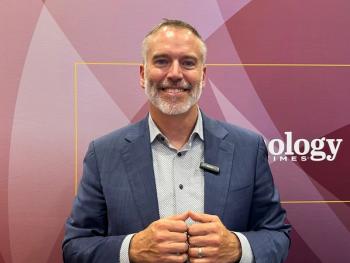Finding a job after ophthalmology training can be a lot like dating: it’s rare to find your perfect match on the first try. For Dr. Steven Christiansen and Dr. Arvind Saini, it took a few tries before they landed the job opportunity that aligned their career goals and personal values.
In this episode of Real World Ophthalmology Podcast, Dr. Christiansen and Dr. Saini join co-hosts Dr. Shani Esparaz and Dr. Lisa Nijm on their journeys to starting a solo ophthalmology practice – and why it was the best decision they ever made.
Quick Takeaways:
· Starting your own practice offers autonomy and quality care, but comes with uncertainty and financial risks.
· Prioritize defining your patient demographic and location, while building relationships to drive referrals for your practice.
· Cultivating connections, especially with local primary care providers, is key for practice growth through word-of-mouth referrals.
Dr. Christiansen describes the early years of his career as unpredictable. After he completed his fellowship training in retina, he moved his family out to Colorado to start his first attending job. He quickly learned the position was not for him; however, given the noncompete clause in his contract, he was forced to uproot his family just a few months later. He started a locum job in Oregon, which he says gave him the time to reflect on his goals and decide what he wanted out of his career. After a few months, he found himself back in Colorado – this time, starting his own solo retina practice.
“It was the uncertainty of joining another group,” Christiansen says on what ultimately pushed him to starting a solo practice. “If I failed, I wanted it to be my fault and not at the will of someone else.”
Dr. Saini describes a similar experience after his training. Today, he runs Integrity Eye, a private practice in California with 3 locations. He says that starting a private practice is really about the journey – there are many ups and downs, and you have to be ready to constantly adapt to change.
“You have to enjoy the struggle and the process of building something,” Saini says. “It’s about you and your sense of self,” whatever that looks like to you.
A few tips to build your private practice:
- Understand the demographics of your target patient population: Where you want to build your practice? Are you carving out a piece of an already occupied region or will you survive in a small market? Be specific in where you choose to establish yourself. Socioeconomic status is equally critical, Saini says. Learn about the insurance marketplace and ensure your services are accessible to the patients you want to serve.
- Time vs money: Which do you have more to invest in your practice? Let that guide your decisions. Christiansen says that at first, he did everything himself. There were certain decisions he was not willing to compromise on – such as his OCT machine of choice – and therefore had to make sacrifices elsewhere to keep costs low.
- Building relationships goes a long way: Both Christiansen and Saini agree that most marketing spreads through word of mouth. Patients will share their experiences in their social circles and fellow colleagues will make referrals. Christiansen says his earliest marketing strategy starting out to stay lean was simply eating lunch in the hospital cafeteria. Everyone needs an eye doctor in their back pocket, he says; getting to know the local primary care providers was critical and maintaining those relationships is critical to the initial growth of your practice.
Forgoing the opportunity to join an established practice and build your own can be daunting. There are risks, as with any major life decision, but there are also significant rewards. Saini says starting his private practice has allowed him to integrate the three parts of ophthalmology he loves the most: surgery, business management, and taking ownership. Leaning on the right people for, asking the important questions, and being creative to minimize costs while maintaining quality care are critical steps to beginning this process.
With the increasing prevalence of private equity, it may be easy to lose sight of the option of starting a private practice. Christiansen says it is important for young ophthalmologists to recognize that consolidation is not everywhere yet.
“This is a career choice you can make,” Christiansen says. “Private practice allows you to be your own boss, create your own space, and give patients high quality care.”
Check out the full episode on Spotify, Apple podcast, Cast box or on our website realworldophthalmology.com
Shivani Majmudar is a second-year medical student at University of Illinois College of Medicine in Chicago, IL. Tune in to the Real World Ophthalmology Podcast to learn from the experts in the field. Real World Ophthalmology is a platform made for and by early career ophthalmologists and trainees to enhance education and practice.





















































.png)


